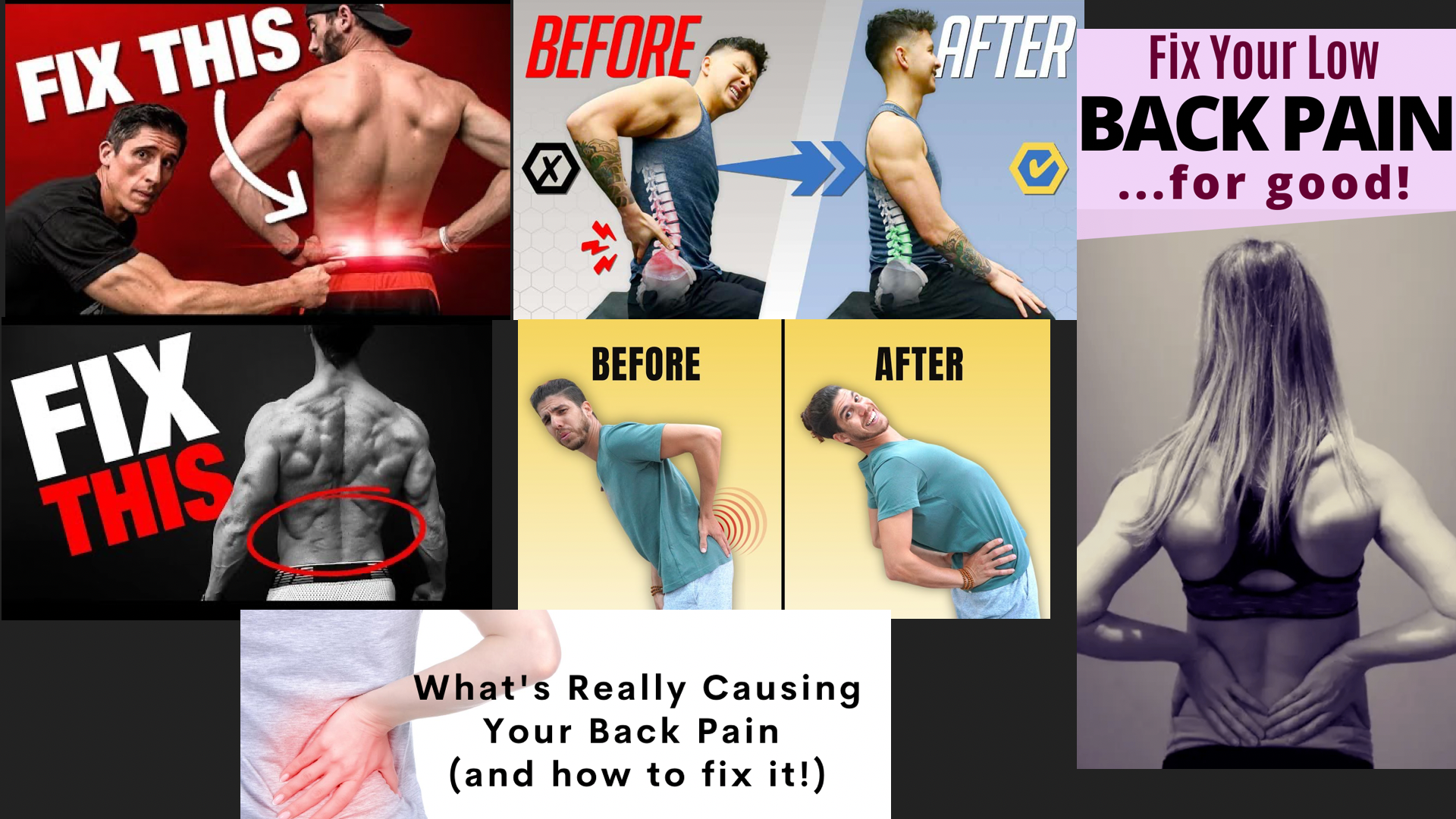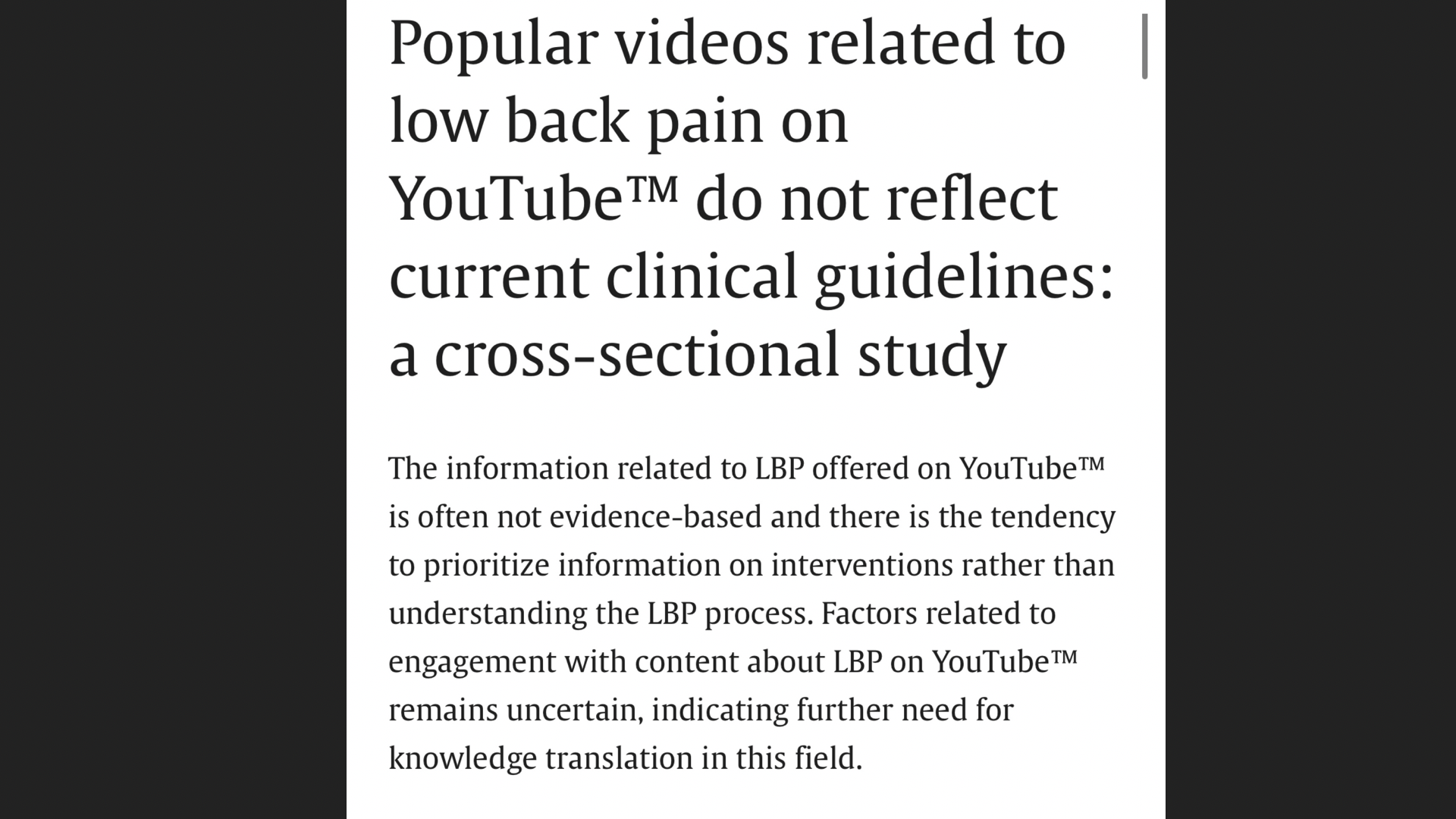Why There’s No “Magic Fix” for Chronic Pain in Fitness – But Here’s What Can Actually Help
2024-11-4
One of the biggest issues social media has brought to fitness is the idea that there’s *one* or even a handful of exercises that can “fix” your shoulder, back, knee, or any other pain. The truth? There’s no magical exercise that will eliminate chronic pain for everyone. But there *are* foundational principles and evidence-based approaches that can help reduce or even resolve pain over time.

Social media loves to make false claims about chronic pain and aches.
Let’s start by clearing something up. Yes, we share concepts and exercises that have been shown to help many people with chronic pain. However, this doesn’t mean there’s a single move that will make your pain vanish. Real solutions require a deeper look into the specifics of your movement, consistency, and training balance.

Even research on advice given on social media about many chronic pain issues says its pretty full of it!
Getting Started: The Key Questions
When people contact us about chronic pain—whether it’s in the back, shoulder, knee, or elsewhere—the first thing we ask is: “What are you doing right now?” This question serves a few purposes:
1. If you’re inactive: Start something consistent. Research shows that exercise in general can reduce pain and improve physical and mental health. Don’t worry about finding the “perfect” program. Instead, choose activities you enjoy and can stick with.
2. If you’re active: Knowing what exercises you’re doing can help us identify any imbalances. Many people tend to overemphasize one type of movement. For example, if you’re doing a lot of kettlebell deadlifts, cleans, swings, and snatches, you’re performing multiple hip hinges. Too much of a single pattern can lead to issues over time.

Finding Balance in Movement
One of our first steps is ensuring your program has a balance of foundational movement patterns. Once these are in place, the specific versions of those movements will depend on your unique needs, goals, and fitness level. Beginners should focus on foundational exercises that introduce variety and fun, while experienced exercisers should periodically revisit their technique. Even small tweaks in how you perform movements can make a big difference.
View this post on Instagram
How you actually teach someone to squat well
For example, a fitness coach at one of our DVRT certifications once said she couldn’t go overhead due to “bad shoulders.” With our approach, she was able to safely and comfortably perform overhead reps in minutes.
Enhancing Your Practice with Stability and Core Training
Balance in movement patterns is crucial, but *so* is stability and mind-body training. Research shows that exercise combined with mind-body practices (like our Myofascial Integrated Movement programs) results in greater pain reduction than exercise alone (1). Similarly, stability training can be as effective—if not more—than manual therapy (2). And yes, proper core training plays a major role in managing chronic pain if done correctly (3).
View this post on Instagram
To see these principles in action, check out example from coach Lina Midla & Cory Crope. They bring these concepts to life, helping you understand what it means to truly train smarter, not just harder. We will cover some of these topics more specifically this week, but if you can take these ideas you will be so much further on your path to feel AND looking better!
You can find out more in our corrective exercise programs and Masterclass programs HERE that are 30% off with code “fall” as well as ALL our functional training tools HERE
View this post on Instagram
View this post on Instagram
References:
- Fernández-Rodríguez R, Álvarez-Bueno C, Cavero-Redondo I, Torres-Costoso A, Pozuelo-Carrascosa DP, Reina-Gutiérrez S, Pascual-Morena C, Martínez-Vizcaíno V. Best Exercise Options for Reducing Pain and Disability in Adults With Chronic Low Back Pain: Pilates, Strength, Core-Based, and Mind-Body. A Network Meta-analysis. J Orthop Sports Phys Ther. 2022 Aug;52(8):505-521. doi: 10.2519/jospt.2022.10671. Epub 2022 Jun 19. PMID: 35722759.
- Gomes-Neto M, Lopes JM, Conceição CS, Araujo A, Brasileiro A, Sousa C, Carvalho VO, Arcanjo FL. Stabilization exercise compared to general exercises or manual therapy for the management of low back pain: A systematic review and meta-analysis. Phys Ther Sport. 2017 Jan;23:136-142. doi: 10.1016/j.ptsp.2016.08.004. Epub 2016 Aug 18. PMID: 27707631.
- Chang WD, Lin HY, Lai PT. Core strength training for patients with chronic low back pain. J Phys Ther Sci. 2015 Mar;27(3):619-22. doi: 10.1589/jpts.27.619. Epub 2015 Mar 31. PMID: 25931693; PMCID: PMC4395677.
© 2025 Ultimate Sandbag Training. Site by Jennifer Web Design.







